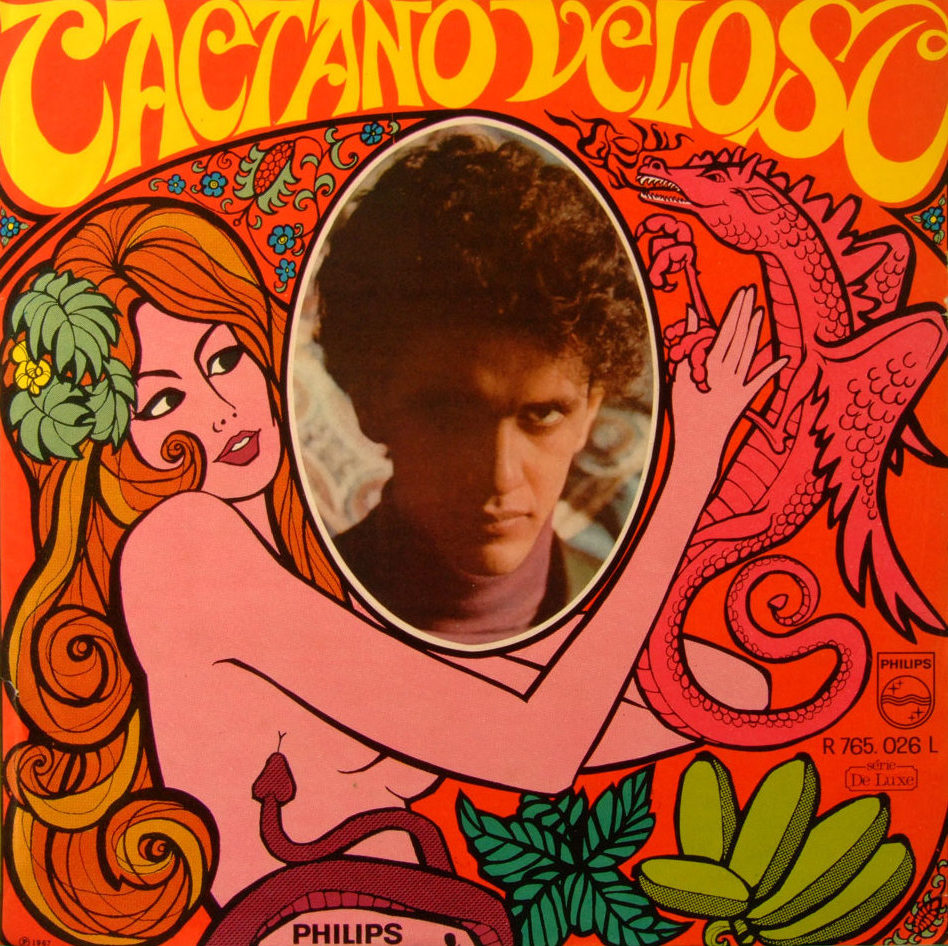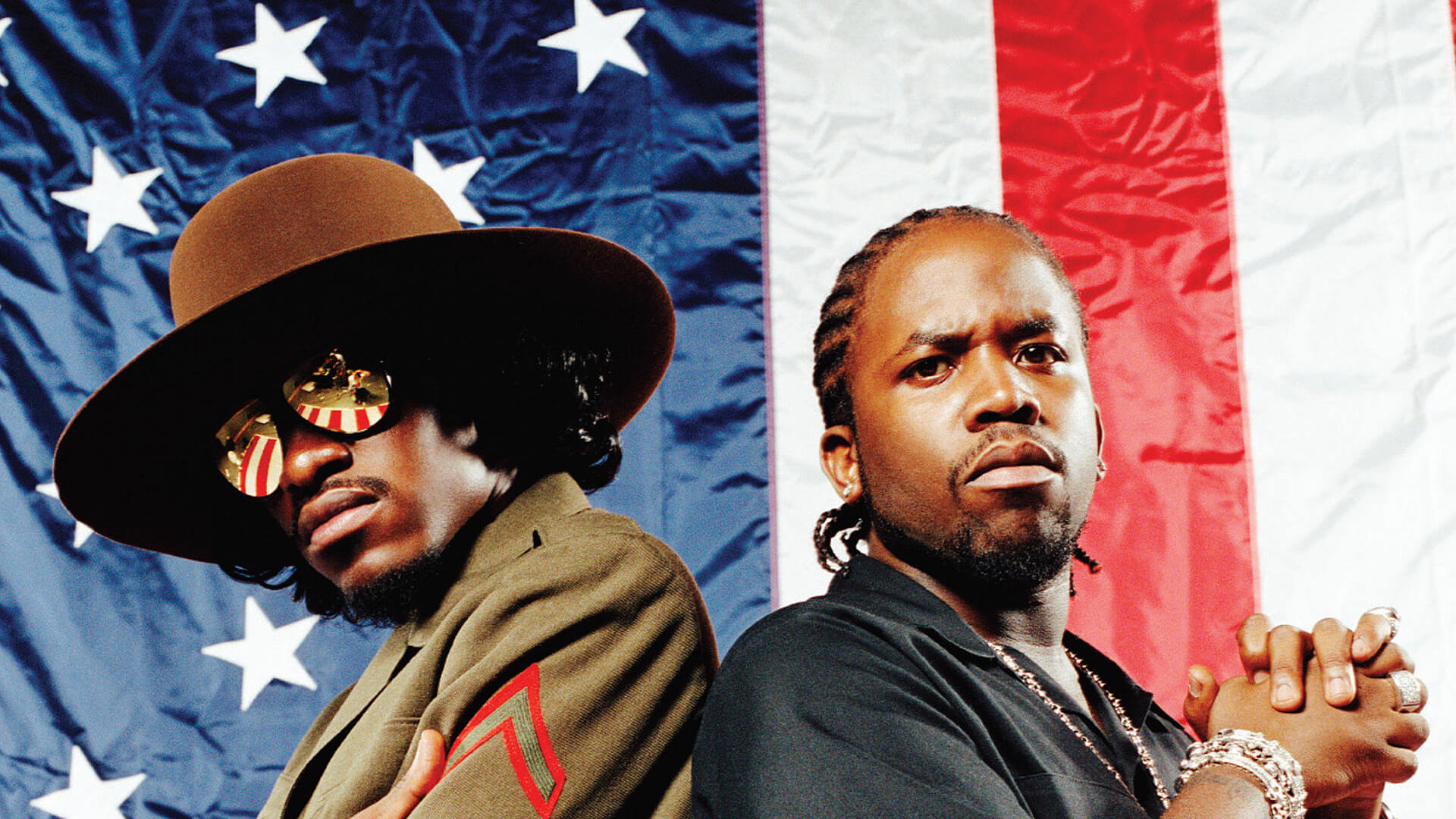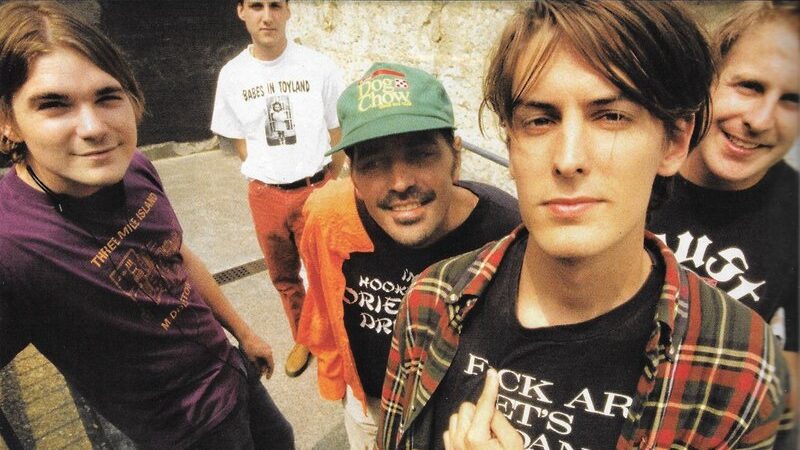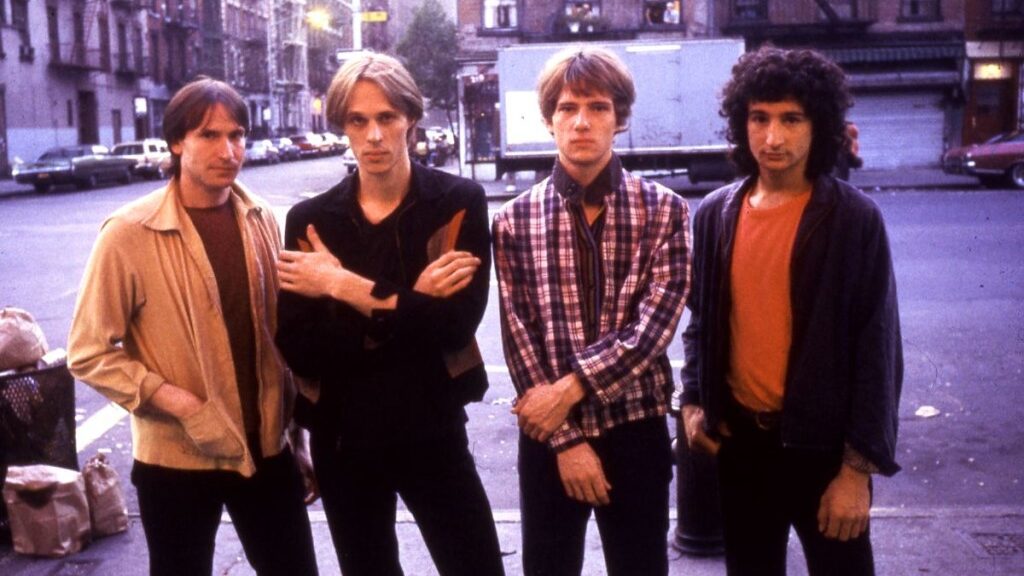
Though not a ‘debut’ in the technical sense, Caetano Veloso’s 1968 self-titled album represented the arrival of a formidable talent – one who stood at the center of a brilliant collective of like-minded cultural agitators. Few albums of the sixties would have as seismic of an impact.
“I organize the movement / I guide the carnival,” declares Caetano Veloso on “Tropicália” – the opening track to his 1968 self-titled LP. Borrowing its name from a then-recent art installation by Hélio Oiticica, “Tropicália” certainly made that proclamation seem oddly prophetic. Beginning with a recitation of Pêro Vaz de Caminha’s famously glowing letter to Portugal’s King Manuel I upon the “discovery” of Brazil, “Tropicália” quickly turns into a missive of a very different kind; Veloso’s surrealistic lyrics survey the physical and cultural landscape of a nation deep within the throes of the “complicated” political growing pains of an allegedly “post-colonial” world.
In one direction, Veloso observes a swimming pool in a stately courtyard, filled with deep blue water brought in from rural Amaralina; to the other side, he sees a “smiling child, ugly and dead.” Threats abound: shadows from low-flying planes overhead; the ground rumbling below from the presence of military trucks; all of which have their sights set on the plateau from which Veloso leads his troops.
The sounds behind him are every bit as quixotic, ominous, and – in the history of Brazilian pop music – unprecedented. From the shrill strings and loose rhythm of the song’s introduction and verses, “Tropicália” strikes a defiant pose, but in its chorus, the track swings gloriously; it’s a fascinating study of contrasts – one whose danceability pulls extra duty in sanding down the rougher edges of the song’s musical and poetic experimentation.
The carnival of which Veloso speaks in “Tropicália”‘s opening verse was the musical movement that would soon take its name from the song. Released in March of 1968, Caetano Veloso (aka Tropicália) was an artistic arrival for the Bahian singer-songwriter, and the first shot fired by the close-knit musical wing of the loosely-organized, multi-media Tropicalismo scene – landing four months prior to its so-called “manifesto,” Tropicália ou panis et circencis. While fine in its own right, Veloso’s official debut, 1967’s Domingo – a collaboration with Gal Costa – was essentially a standard late-era bossa nova record; Caetano Veloso was a statement.
Still, next to its opening track – and the half-dozen-or-so classic records released by the leading Tropicalists over the ensuing twelve months – much of Caetano Veloso seems almost hesitant by comparison. That’s not to say that highlights don’t abound, but more consistent sonic boundary-pushing can be heard on Panis et circencis, and the contemporaneous releases from Costa, Os Mutantes, and Veloso’s long-time friend and fellow Bahian, Gilberto Gil. Like those albums, Caetano Veloso was produced by Manoel Barenbein; what Caetano Veloso lacked, in comparison, were the arrangements of Rogério Duprat – who would not work on a solo Veloso record until 1969’s (also) self-titled LP.
Ultimately, what that meant was – aside from Júlio Medaglia’s provocative arrangement on “Tropicália” – Caetano Veloso largely lacks the technicolor vibrancy of the other “core” Tropicália releases. As a result, there is more of a singer-songwriter quality to the album; thankfully, Veloso is in fine form throughout. The primary composer of eleven of the record’s dozen tracks, he seamlessly transitions from wistful balladry to impressionistic social commentary – often within the same line of verse.
In this regard, no track on the album captured more attention than “Alegria, alegria.” Veloso’s first hit, the song weaves a love narrative through romanticized Brazilian settings and cryptic allusions to “western” pop culture touchstones: Coca-Cola, Brigitte Bardot, and a flippancy toward “the bomb.” Incidentally, anything resembling an embrace of American, British, or French culture earned Veloso and his fellow Tropicalists suspicion and scorn from both Brazil’s right-wing military dictatorship and its left-wing student movement – each of which harbored deeply nationalistic tendencies.
Another such embrace of “outsider” cultural influence came in the form of “Alegria, alegria”‘s instrumentation. Backed by a São Paulo quintet known as the Beat Boys – who appear on five of Caetano Veloso‘s twelve tracks – ““Alegria, alegria” would initially ruffle feathers when it was premiered at the third annual Brazil Popular Music Festival in 1967. Though it was the first time that a rock band had performed at the televised festival, the song would earn Veloso both a standing ovation and a fourth place prize. Along with Gilberto Gil and Os Mutantes’ rendition of “Domingo no Parque” – which took home the prize for best arrangement – the stage was set for Tropicália’s brief moment in the spotlight.
Recorded throughout late-1967, Caetano Veloso bore virtually zero resemblance to the previous year’s Domingo, whose gently sweeping melodies rarely broke a standing pulse. However, despite its somewhat-disjointed assemblage – five songs with Beat Boys, one with Os Mutantes; three tracks arranged by Júlio Medaglia, one by Damiano Cozzella – both the consistency of Veloso’s songwriting and his commanding vocal presence throughout make for a record that was as cohesive as it was innovative.
Aside from the aforementioned tracks, both “Clarice” and “Soy loco por tí, América” stand out from the pack. The former song mixes its understated beauty with some of the most haunting lyrical imagery to emerge from the Tropicália movement; its skeletal arrangement serves as a perfect complement to the “mystery” concealed by its title character. A late-album highlight, “América” combines similarly ominous visuals – courtesy of Gilberto Gil and writer José Carlos Capinam – with the same kind of upbeat instrumental backing that would provide a fascinating juxtaposition to later Tropicalismo works.
Of course, even if the meanings remained cryptic, merely naming a song “Soy loco por tí, América” (“I’m Crazy for You, America”) was bound to catch the attention of Brazil’s political leaders and cultural censors, who – within months of the release of Caetano Veloso – began to fret over the influence of the young upstarts in the Tropicalismo scene. By the end of 1968, both Veloso and Gil would be arrested for unnamed crimes, setting into motion the chain of events that would lead to their deportation in 1969. With the movement’s two main “agitators” out of the country, Tropicália was effectively over. However, its seismic influence ensured that Brazilian music would never again be the same as it had been before this album’s arrival.




